OMDS Q&A at CP+2023: OM-5 details, E-M1X/E-M1 III/E-M10 IV going away? Amazing new 90mm macro
posted Friday, April 7, 2023 at 6:03 PM EDT
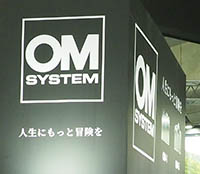
I’m writing the first draft of this article about a week after the CP+ 2023 show in Yokohama Japan, sitting happily in a hotel room in northern Japan (Aizuwakamatsu, Fukushima prefecture). Aizu is a small city surrounded by mountains, with cheaper hotels and fewer distractions than Tokyo has to offer; I chose to spend some time here to focus and make some headway on writing up the pile of interview material I have from the show. (This was only partially successful, Aizu is also known for its excellent Sake, or Nihon-shu as the Japanese themselves call it ;-) Although one of the first articles I wrote following the show, various delays have led to me only publishing it now.
As noted in my other articles from the show (readers of those can skip this part), this was the first time the show’s been held for three years now, thanks to travel restrictions from the COVID pandemic, a long time in the photo industry these days, with AI “deep learning” technology rapidly revolutionizing camera autofocus and subject-recognition systems and optical design advancing by leaps and bounds.
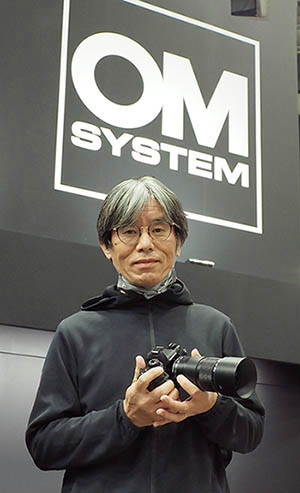
The show seemed bursting with enthusiasm and positive energy, with crowds bigger than I remember seeing in the last pre-COVID session in February 2019. (I don’t know how the official attendance figures compare, but it felt like there was a very high level of energy and excitement in the air.)
I interviewed top executives from no less than 8 companies, which I’ll be writing up in the coming days and weeks. (Hopefully not stretching to months, as was the case following my last trip here in late July and early August of last year!)
I met with OM Digital Solutions Corporation (OMDS for short) when I was in Japan in late July 2022, and again at CP+ 2023 just a couple of weeks ago. I was curious to hear how things had evolved for them since our last meeting, and had a few product-related questions to ask as well.
That earlier interview was very in-depth with a lot of information packed into it. It’s well worth a read if you’re interested in any of the following topics:
- How their business is doing, following the transition from Olympus to OMDS
- The relationship between OMDS and Olympus (the latter still provides some engineering services, as an arms-length contractor)
- How is their manufacturing set up, in the massive Vietnam facility
- How they’re dealing with supply-chain issues
- What’s the situation with warranty service in Canada? (answering a reader’s question)
- Future branding
- Lens roadmap, particularly tele zooms
- The fate of the f/1.2 lens line
- The cause of the backlog for their (incredible) 150-400mm tele
- How they’re using stacked-CMOS sensor tech in the OM-1
- Details on the OM-1’s cross-quad phase-detect autofocus
- Progress and future direction for their AIAF algorithms
- A deep dive on the differences between AIAF and Tracking AF, and when you’d want to use one vs the other (this has been the source of a lot of confusion in the user community)
With all that already covered in the previous meeting, this time I focused more on specific product-related questions rather than large strategic issues.
This time I met with Mr. Yoshiyuki Nada, marketing communication for the Global Marketing department.
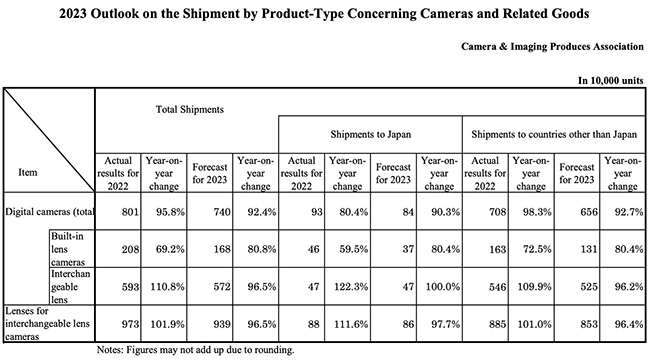
Market conditions
DE: When we met in late July, the market was trending up nicely. How has it done since then, and what do you project for 2023?
YN: According to CIPA, last year's interchangeable lens camera shipments, including mirrorless, were more than 10% above the previous year's level, and our last year's figures exceeded that. We expect 2023 will be the same level as in 2022. However, we have some concerns regarding market decline in some regions throughout the third quarter (from October to December 2022), along with inflation in the economy, etc. As far as we are concerned, the sales of OM-1 are going well as planned, which is the main factor in our strong performance.
DE: What parts of the world are you concerned about there being a decline in? (1:04)
YN: Sales in Europe have become a bit slower than the first half. The US has been running according to our plan, but we would like to see continued growth, considering its market size. The US and China are both very big markets, so we would like to enhance our share there.
This tracks with what I heard from essentially all the manufacturers I spoke with at the show; the photo industry is recovering nicely from the impact of the pandemic, and all trends seem to be positive.
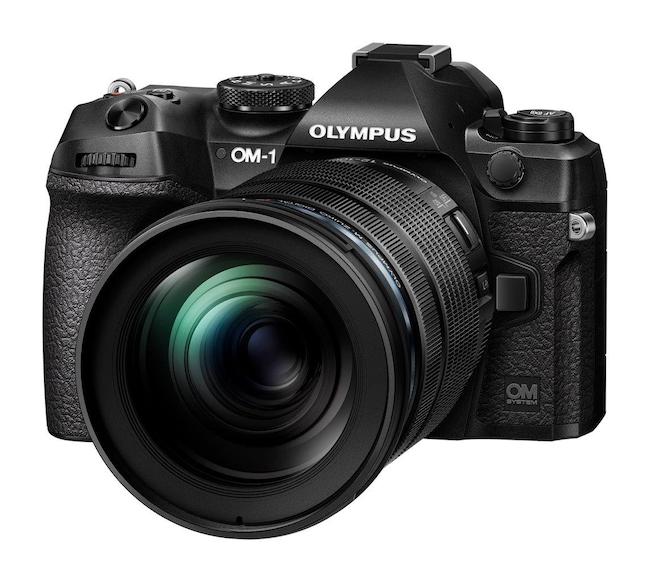
OM-1 supply and demand
DE: Demand for some products (particularly the OM-1) was outstripping supply in July. Has production now caught up?
YN: There were some problems with parts supply for a while, but it has been resolved now.
As I learned last July, OMDS had expected the OM-1 to be popular, but it far exceeded their projections, with the result that some of their parts suppliers weren’t able to supply components as quickly as they needed. The OM-1 was significantly backordered for a while, but they’ve since caught up, and production is currently matching demand.
Some details about the OM-5 body, sensor and processor
DE: Your latest camera of course is the OM-5. It seems it’s basically the E-M5 Mark III with the E-M1 Mark III’s processor and firmware dropped into it. The body itself is obviously a new design, and it carries the (remarkable) IP53 rating with it. Are there other, less obvious differences between the OM-5 body and that of the E-M5 Mark III?
YN: Our concept for OM-5 was to provide a compact, lightweight OM SYSTEM body with unique features to provide a shooting experience that enhances the enjoyment of adventure enthusiasts who incorporate photography as part of their hobby. In order to add value for this target user, TruePic IX has been included to provide additional functionality.
DE: So other than the obvious body changes, the system is the same but with a more powerful processor?
YN: Yes, the new processor is the main thing.
DE: Is the OM-5 using the identical sensor from the E-M5 Mark III? (I notice that the camera seems to have better detail rendering at very high ISOs than the E-M5 Mark III, but assume that’s due to the more powerful processor and algorithm improvements over time.)
YN: Based on the tunings performed on the E-M1 Mark III, we have added the OM-1’s image processing elements that were applicable to it. The resolution should be improved as you felt.
After a little confusion, I got it sorted out that while the OM-5 is the update to the E-M5 Mark III, it actually inherits the processor from the E-M1 Mark III, but details of the sensor are proprietary.
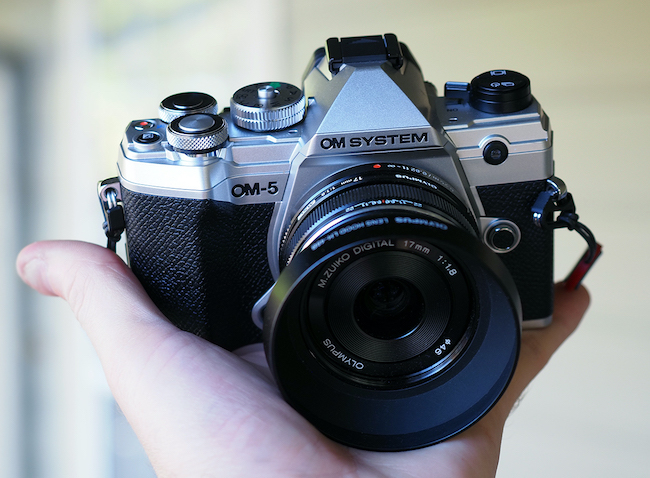
What’s the plan for the E-M1 Mark III?
DE: With the OM-1 and OM-5 both out now, the oldest Olympus model begging for an update is the E-M1 Mark III. The E-M1 Mark III and OM-5 also seem to pose a bit of a quandary for users: They seem virtually feature-identical, thanks to sharing the same sensor and processor (Note that I wrote this question not knowing the answers to the questions above, as to whether this is in fact the case.) The obvious move would be to do the same as you did with the OM-5, basically putting the OM-1’s processor into the E-M1 Mark III’s body. Are any of the advanced AI-based subject recognition modes of the OM-1 tied at all to its stacked sensor, or would they work equally well with a conventional sensor design?
YN: First of all, let me explain that the product concepts of OM-1 and OM-5 are very different: OM-1 aims to satisfy those who "want to master photographic expression without compromising equipment or portability," mainly in outdoor nature photography and bird photography etc. On the other hand, as for the OM-5, we aimed to create a product that will satisfy those who "enjoy outdoor activities, actively seek encounters in nature, and want to record their encounters beautifully." Therefore, as you pointed out, some of the performance of E-M1 Mark III has been carried over to OM-5. However, I hope you understand that we will continue to place importance on "what kind of values we provide to what kind of customers," and that the selection of key devices and the development of key technologies will be carried out in this context.
DE: How would you describe the target users for the OM-5 vs the E-M1 Mark III?
YN: Actually, the OM-1 is the successor to the E-M1 Mark III.
This was very interesting to me, I was thinking of the OM-1 as the successor to the E-M1X, and expecting that there’d be a model positioned between the OM-1 and OM-5 as the successor to the E-M1 Mark III. When I asked about this explicitly, Nada-san confirmed that the mid- to high-end product lineup will consist of just two models, the OM-1 and OM-5. This makes sense, as I was having a hard time figuring out what an intermediate model would look like. There didn’t seem to be a lot of room between the OM-1 and OM-5 for a third model to fit into.
At a 50,000 foot level, the main differences between the OM-1 and OM-5 are the former’s AI-based subject recognition modes and very high continuous shooting speed thanks to its more advanced processor and stacked sensor. I suppose OMDS could make a camera with the more powerful processor but slower sensor, and could conceivably bring it in at a price midway between the OM-1 and OM-5, but it’s an open question how the market would segment between the three models. Would there be enough people who really wanted the subject recognition modes but didn’t also care about high-speed shooting, even at a $500 (USD) price difference?
As we’ll discuss a bit more below, Olympus’ camera operation wasn’t profitable, and part of that was probably because their wide range of models would make it hard for anyone to achieve the economies of scale needed for profitability. Add to that the inventory costs, spare parts costs, training and service costs associated with each additional model, and it was clear they needed to simplify their product lineup.
Speaking just for myself, while I’d rarely need the blazing speed of the OM-1, an additional cost to go from a putative $1,700 in-between model to the $2,200 OM-1 wouldn’t be a make-or-break decision for me. A full $1,000 between the OM-5 and OM-1 is indeed a big step, but I can see the incremental cost of developing, producing, distributing and supporting a $1,700 intermediate in fact not being worth the incremental business volume it’d bring.

The E-M1 Mark III is currently a great bargain (get them while they last)
[I wrote this question before I knew the answer to the one above, but I’m leaving it in because Nada-san made a good point, and because the E-M1 Mark III makes a better case for itself when you realize that there isn’t any model coming positioned between the OM-1 and OM-5.]
DE: I know you can’t talk about unreleased products, but the E-M1 Mark III seems to be in a bit of an awkward place right now. The only advantage it seems to offer over the OM-5 is its 18fps (vs 11fps) C-AF shooting speed, while the OM-5 looks like it has better weather-sealing. Seeing how the transition from the E-M5 Mark III to the OM-5 worked, I’d expect many users to be holding off on E-M1 Mark III purchases, in anticipation of a successor OM model that might incorporate some of the AI features of the OM-1. Of course, such a model might well have a higher retail price. What would you say to a user trying to decide whether to buy an E-M1 Mark III now vs waiting for what might be coming next?
YN: First of all, the time to purchase is when you want it. Digital devices are not evolving as fast as they used to, but their successor models are still always technologically superior. What do the customers themselves value in this context? What is important to you? What kind of functions and performance are important for what kind of shooting? Or, your priority may be the overall cost performance. No matter which camera you choose, we hope that you will choose a camera that you will want to use a lot, and that you will take a lot of pictures. That will make the camera happy and that will make us happy.
This is a great answer, and a point I’ve often made myself about whether or not you really need to upgrade your current camera to the latest and greatest. Unless you rack up many of thousands of shots a month (such that your current camera might be close to wearing out), a camera you bought 3 or 5 or however many years ago still does the same job that you bought it for; it still takes photos every bit as good as when it was new. Sure, go ahead and upgrade if there’s some new feature that will really change your photos for the better, but a lot of times we feel pressured by the allure of the new to ditch old but perfectly functional gear.
In the case of the E-M1 Mark III, now that we know it’s not likely to be replaced with something with much-upgraded capabilities slotted between the OM-1 and OM-5 anytime soon, it does provide a solid bump in C-AF shooting speed with very good AF performance thanks to using the same TruePic IX processor as the new OM-5. - And all that for only a $300 cost bump above the OM-5. Given that, I expect the remaining stock of the E-M1 Mark III’s to go fast, as their current street price represents quite a bargain relative to the newer models.
Are higher-megapixel models planned for the future?
DE: We’re seeing more and more cameras with higher pixel resolutions these days, with 30, 40, and even 60 megapixels becoming common. Olympus and now OMDS have largely avoided the megapixel race, but with so many higher-resolution models being offered by competitors, isn’t it important for OMDS to include at least one higher-resolution body in your lineup? Some potential users may be discouraged from adopting the platform, if they feel there isn’t a path to higher-resolution models in the future.
YN: We have not stopped increasing resolution. Our priority is to expand the shooting scenes and what you can shoot as well as to decrease the failed ones, and then to increase the image quality of these images (image quality is not all about resolution, is it?).
I commented at this point about the megapixel race and how people frequently think they need more megapixels than they actually do. (Or rather, that the difference between, say 24 and 36 megapixels isn’t nearly as visible as most people expect.) Nada-san admitted that the camera companies themselves bear some responsibility for this, since megapixel count has always been an easy number to market and use as a justification for upgrading to the latest model.
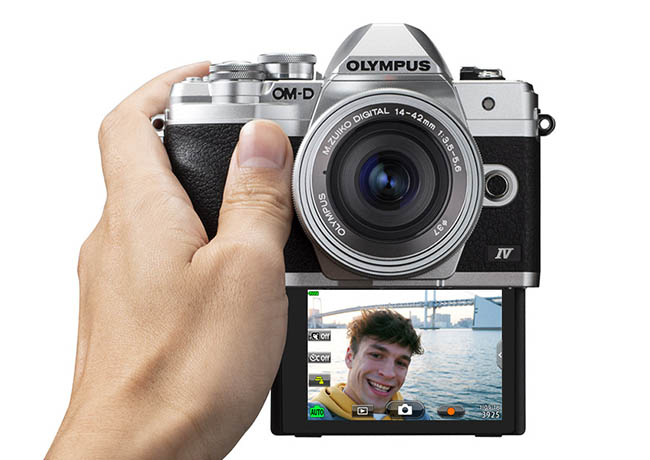
What’s the status of the PEN series (and the E-M10)?
DE: In the US, we’re still seeing new-stock Olympus PEN series cameras being sold. (The E-P7 and even the E-PL10) Are these still being manufactured, or are they being phased out? Do you see continued demand for that body form-factor? (I’m expecting that OMDS’s necessary cost-trimming relative to Olympus will lead to a more streamlined product lineup. Can the PENs continue in this environment? - If so, how will they be branded? Will they become the OM System PEN line?)
YN: Manufacturing of E-P5 has been terminated, however E-PL10 and E-P7 are still being sold. Regarding the design of the PEN series, we believe that there is a demand, but the demand for "entry-level" models has dropped significantly in the overall market trend. In this sense, we believe that this is something to consider in the context of the entire product lineup, not just the PEN series, as you have indicated.
DE: So are the E-PL10 and E-P7 still being manufactured?
YN: The E-P7 is still being made.
DE: And you said that you have to consider this in the context of the entire lineup, not just the PEN series. I take it from that that the E-M10 Mark IV might also be the last of its line, correct? That was kind of the entry-level model for the OM-D line.
YN: Nowadays, this is my opinion: You need to ask “What is entry-level?”, given the current market situation. Many users are using smartphones in everyday situations. So what is the upgrade from that? What is an entry-level camera? It’s different than in the past.
DE: Yeah, I agree. I think a lot of what I’m talking about when I say “entry-level camera” is “inexpensive camera”, to give people a lower-cost way to get onto the platform. It used to be that people could get started with an interchangeable-lens camera very cheaply, but that sort of product has almost entirely disappeared. But it’s tough to provide that. Such models would have very low profit margins, and even then the market demand might not be very high, so you’d have a hard time recouping development costs. (10:39)
This is unfortunately very much true. While once upon a time, a $300-400 camera could offer advantages over a smartphone, now the “entry” level ILCs are competing with n-th generation smartphones selling for $1,00 or more. Another manufacturer I was discussing the same topic with pointed out that there’d be no point producing a dirt-cheap camera with such limited specs that it only convinced users that their smartphones were better.
As I was reviewing and editing this piece though, I realized that there’s another path for low-cost entry to any particular platform: Used gear. Especially for Micro Four Thirds, it’s been around long enough that you can get very good deals on very capable cameras on eBay. This is also the case for Panasonic’s Micro Four Thirds models and Sony’s E-mount, but less so for Nikon and Canon. In any case, it struck me that the used market may be providing a functional alternative to new entry-level bodies.
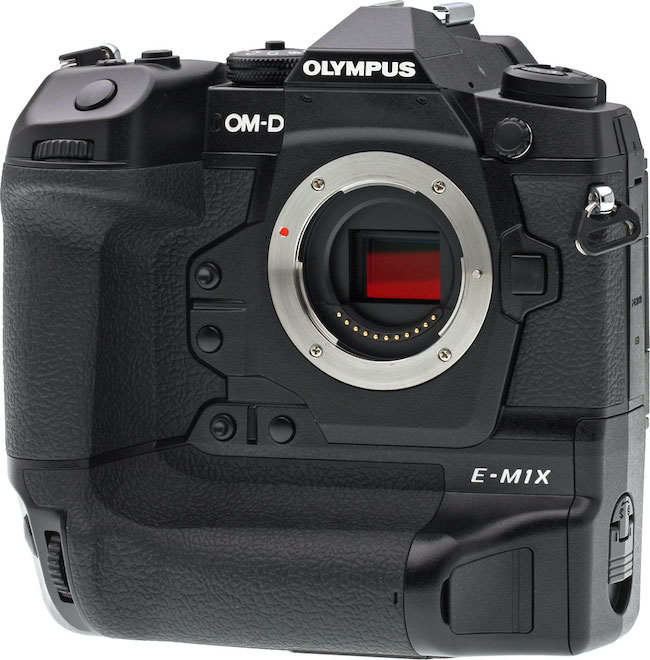
Will there be a successor to the E-M1X?
DE: The OM-1 is astonishing for the level of functionality it packs into such a compact and rugged body, and compact “go anywhere” bodies are a key feature of the OM System. At the same time, though, some pros prefer a bigger body with a larger grip, especially when working all day with long lenses. Is there a chance we might see an E-M1X style body in the future? What have you been hearing from users in this regard, are some of them asking for an E-M1X style camera?
YN: The E-M1X was designed to ensure that the operability of the camera remains the same in both vertical and horizontal positions. It is not a body that is simply designed to have a larger grip. We are aware that there are users who desire such a body, and we are continuing to study the possibility.
DE: That’s interesting; that made me realize that my view of cameras like the E-M1X is all about grip size because I have large hands. Of course, as you point out, there’s a much more general use case for pros, who want to switch between landscape and portrait-format shooting interchangeably. (11:16) So there are some people requesting a body like that, is it a small percentage or quite a few?
YN: I would say it’s very limited, especially in Japan. Japanese people like very compact bodies and camera systems. US people tend to like a nice big camera more.
DE: Yeah, I think the OM-1 is very well-suited to professionals, but I’d think that pros using long lenses would appreciate the larger form-factor. You mentioned people in Japan; is Japan the biggest market for you in terms of actual sales?
YN: Europe is actually the biggest market for us.
DE: Ah, so is it Europe, Japan, US maybe?
YN: I think maybe.
DE: And in Europe, is there also a preference for very compact cameras?
YN: It depends. Some like very small cameras, others like bigger ones.
DE: So it comes down to a matter of whether there’s enough of a market to justify a separate model.
YN: My question is, how about the battery grip? I think that may be the solution for such users.
A good point; the battery grip provides the flexibility for quickly switching between landscape and portrait modes, and at a relatively low cost.
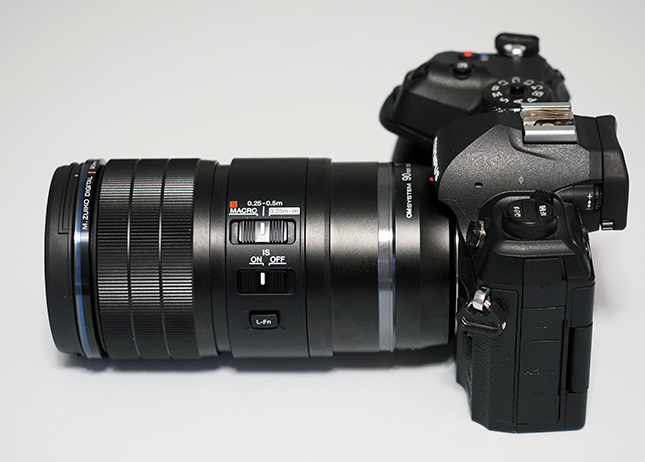
The 60mm macro was already great, how does the new 90mm f/3.5 macro compare?
DE: The new 90mm f/3.5 macro lens looks incredible: The M.Zuiko 60mm f/2.8 macro is one of my all-time favorite lenses. This new model is a whole different animal though. Its list price is 3x that of the 60mm, but it brings an enormous increase in capability on just about every level: 2x magnification vs 1x (and the ability to go to 4x with a teleconverter), 5-axis image stabilization, and I’m sure a much more sophisticated optical design. The 60mm f/2.8 macro was already an impressive lens optically, especially considering that it first shipped almost 10 years ago. How would you compare the optical performance of the 90mm f/3.5 with the earlier 60mm; what would users notice most in terms of image quality?
YN: As you said, the 60mm macro also has excellent resolution, so much so that it could be categorized as a PRO lens. In terms of resolution, the 90mm has some high-frequency advantages over the 60mm, but not many people will be able to recognize the difference.
We discussed specification of the magnification ratios of macro lenses a bit. I was a little confused because OMDS sometimes talks about the equivalent magnification on a full-frame camera, saying that 1:1 on MFT is like 2:1 on a full-frame. I guess that’s strictly true from a user’s standpoint, but I personally find it a bit confusing. Just to be clear, the 60mm lens can shoot to a 1:1 ratio between subject size and the image on the sensor. And it’s true that you’d need a lens with a 2:1 magnification to occupy the same percentage of the frame on a full-frame camera. But the 60mm is technically a 1:1 macro, while the new 90mm goes to 2:1.
FWIW, I’ve found the 60mm to be a truly excellent lens; it’s one of my all-around favorite lenses and certainly my favorite macro. (Nada-san told me that the R&D department also told him that the 60mm has unusually good optical quality.) The 90mm would be a must-buy if I had an OMDS system, although I’d have to save my pennies a bit to afford it.
Why does the maximum aperture decrease at extreme macro settings?
DE: When I was looking at the specs for the 90mm macro, one spec caught my eye, namely the variation of maximum effective f-number with focusing distance. (I gather this was also the case with the 60mm/2.8 as well, but I wasn’t aware of it.) The maximum aperture is f/3.5 for infinity focus, but decreases to f/4.5 at 1:1 magnification on the sensor. Setting the focus limiter switch to S-Macro drops the effective aperture to f/6.3 at 1:1 and it goes all the way to f/8 at 2:1. Why does the maximum effective aperture become smaller as the lens focuses closer? Is this an unavoidable characteristic of all macro lenses?
YN: As you know, the focal length f-number, is the value at infinity. In addition, the angle of view is the same. As for the change in effective f-number, most lenses, not just macro lenses, change with shooting distance. It is more noticeable on the close side, which is why people notice it more on the macro lenses.
This was new learning for me (revealing my ignorance about so much having to do with optics!) As noted, the aperture of a lens is defined at infinity focus. As you focus closer with any lens, the distance between lens and the focal plane becomes greater. This means the focal length is essentially getting shorter , and because the physical size of the aperture isn’t changing, that in turn means that the effective f-number increases. An example that might help visualize what’s going on is when you use macro extension tubes to adapt a normal lens for extreme macro use. The extension tube physically moves the entire lens body away from the camera’s flange mount, increasing the size of the image on the sensor. The same light is still coming in the front of the lens though, so spreading it out over a larger area means the intensity is reduced at the sensor’s surface. Hence, the effective aperture is reduced, and the f-number increased.
Bottom line, because macro lenses focus so closely, what’s a minor effect with normal lenses at more typical subject distances becomes a significant factor.
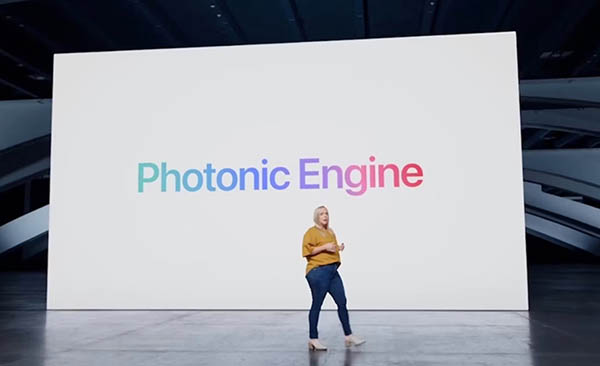
What’s in the future for computational photography?
DE: Olympus and now OMDS have been leaders in implementing computational photography in their cameras, with features such as Live Composite, high resolution modes, Live ND and Focus Stacking. I’d characterize all these as “capture aids”, in that they more or less assist the photographer with the mechanics of getting the images they want, but they don’t affect the character or content of the images themselves. (HDR capture is an exception.) In contrast, smartphone makers have used extensive machine learning-based image manipulation, strongly adjusting image tone, color and even focus in applications like night shots, portraits (adjusting skin tones in particular) and general white balance. I think it’s going to be critical for traditional camera makers to meet the image-quality (or perhaps more accurately “image-appeal”) offered by the phone makers. What can you say about OMDS’s work in this area?
YN: Computational photography is an important topic for us to focus on. First of all, the important point for cameras, as you know, is that it is a "photography assistant" and for more advanced users, it is a function that leads to "success rate of photography". This point is mainly different from the computational photography of a smartphone.
DE: I think my feelings about AI image enhancement differ from those of most camera manufacturers, in that while I do like having full control over the images at my option, I’d also sometimes like a bit of “help” from the camera. What do you see as OMDS’s strategic direction with computational photography?
YN: There are likely many possibilities. The difficulty is deciding what level we apply to the camera. Many users like a very natural look, and for that don’t want any artificial effects. But smartphone users are used to letting the phone do it all and expect that. The difficulty is deciding what level of AI to apply; that part is very difficult.
DE: I think many times, I’m that second user you spoke of. While I can do whatever I want on the computer, I often don’t want to spend the time it takes to tweak and tune each photo in Photoshop. Sometimes I want to have complete control, but other times I’d like to hand off some of the work to the AI. I’d like to see AI “helper modes” that would do certain things, and then I could dial the amount of the effect up or down, just like other image parameters like contrast, saturation, etc. I feel like having that convenience factor could be important even for enthusiasts.
YN: I think in the future, camera manufacturers will need to do something like that, to add such features.
This was very interesting and encouraging, to me at least. While OMDS sees the role of AI being different in cameras than smartphones, they do acknowledge its potential importance for increasing the “success rate” of photographers. Nada-san obviously can’t speak too specifically about future plans, but Olympus was an early leader in implementing computational photography in their cameras, so it seems natural that OMDS would be looking at ways to extend that.
For me personally, being able to choose between “pure camera” functionality and some sort of AI-assisted capability would be a huge factor for me to buy one camera over another. As long as the original RAW files are available, I don’t see any downside to tapping AI to get better photos with less effort.
Could the dedicated neural-net hardware in the TruePic X be used for AI image enhancement as well?
DE: Is it possible that the same dedicated neural-net hardware that’s used in the TruePic X for subject recognition in AF could be used for machine learning-based image optimization as well?
YN: I think it is possible.
I think we’re going to start seeing this, hopefully sooner than later. I don’t know if the processor architecture is such that the neural-net hardware could be switched between pre-capture subject recognition and post-capture image enhancement, but I’d be surprised if it couldn’t be. And neural-net hardware is neural-net hardware, at least to a first approximation. The differences between doing subject recognition and image enhancement are purely algorithmic, that is it’s just a matter of firmware programming. It might take a year or two for camera makers to start implementing this, but I’d bet any amount of money that cameras 5 years from now will be doing a lot of the image-enhancement processing we associate with smartphones today.
How about in-camera, post-capture AI enhancement?
DE: It would be a departure from how cameras currently work, but I wonder about the possibility of AI-based image optimization being applied post-capture. I could imagine image optimization being applied to captured RAW files in a “development” process, similar to how various filters or settings presets can be today. Do you see a potential for that sort of usage, or do you feel that it wouldn’t be an appealing feature/usage pattern for consumers?
YN: The OM Workspace software has a similar feature now. The AI Noise Reduction in the OM Workspace can optimize noise control for each captured image, based on the data learned from the sensor characteristics of each model.
We’re of course seeing AI functions in lots of imaging software these days; there’s literally been a revolution in third-party image-manipulation applications over just the last two or three years; the capabilities of a lot of current software is unimaginably beyond what we thought possible just a few years ago.
I’m curious in a geeky kind of way about just how the AI noise reduction in OM Workspace is set up; that is, what level of detail it’s been trained on. They certainly will have fed it a very wide range of images for each sensor, shot at different ISOs, exposure levels, exposure times, lighting conditions (meaning color temperature and the resulting white balance applied), etc, etc.
Are the specific exposure parameters (shutter speed, aperture, ISO, white balance setting) used as inputs to the machine learning system, or did it only look at the images themselves without any associated metadata?
This is just idle geekery that will likely never be answered, but it’s interesting to think about. (Do any of our readers work with AI-based image manipulation - and could also talk a bit about how things are done? I’d love to talk with and possibly interview someone who’s working on deep-level image enhancement algorithms - flag me in the comments if you’re such a person!)
Summary
This was another encouraging interview. As I heard from other companies, the camera market is doing well these days, and OMDS is enjoying a lot of success, particularly thanks to their OM-1 model. The OM-5 also looks like a great update from the E-M5 Mark III, with the much more powerful processor and from the E-M1 Mark III. The OM-5 also has truly exceptional weather sealing as well, always a hallmark of Olympus and now OMDS camera systems. While Europe has shown a little softness for them, the US and other regions are running according to plan, although they’d of course like to be doing even better.
As expected, OMDS is simplifying and rationalizing their product line as compared to the broad but unprofitable array that Olympus fielded. Specifically, there will be just two mid- to high-end bodies, the OM-1 and OM-5. The OM-1 is meant to be the successor to the already-capable and highly successful E-M1 Mark III, while the OM-5 is the successor to the E-M5 Mark III. At least at this point, it doesn’t seem that there will be a body in between the other two, and the entry-level E-M10 line will go away. Likewise, the E-PL10 have been discontinued, but the PEN E-P7 remains in production. The OM-1 also takes the place of the E-M1X; it doesn’t seem likely that we’ll see the return of the large “unibody” form factor; the battery grip for the OM-1 provides for easy switching between landscape and portrait formats, and the OM-1’s processor is powerful, compact and energy-efficient enough that the larger body isn’t required for heat dissipation.
Olympus always had excellent optics, and it seems that OMDS is continuing that tradition. Their new 90mm f/3.5 macro lens was arguably the hit of the show for them, with people lining up to get hands-on with it. Their 60mm f/2.8 macro was already an exceptional lens (especially for the price), and the new 90mm seems even more so. The new lens is also unique for going to 2:1 sensor image/subject size ratio directly, and all the way to 4:1 with a 2x teleconverter attached. It’s not cheap but looks like a really exceptional optic.
As I did with other manufacturers at the show, I talked with OMDS about computational photography and the potential application of AI to image enhancement. They seemed much more open than other camera makers to the idea of AI helping with image adjustment, rather than simply being a tool for subject recognition. I was happy to hear this, probably because it matches my own views on the matter :-)
Overall, OMDS seems to be doing well, paying close attention to rationalizing their product line so it can be profitable and sustainable into the future. They have strong user interest and sales, and a new lens that continues and extends the legacy of great optics they inherited from Olympus.
As I’d said with Olympus before them, I think OMDS has done a better job of identifying their unique niche and value proposition than most companies. If you’re looking for great performance in a compact and (very) rugged/weatherproof body with excellent and likewise-compact/weather-resistant lenses to use with it, OMDS is clearly the go-to company. Having shed a lot of corporate bulk and simplified their product line, they seem well-positioned for the future.